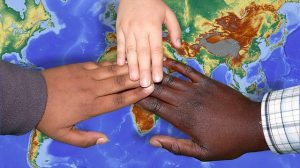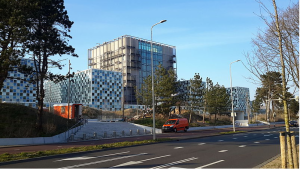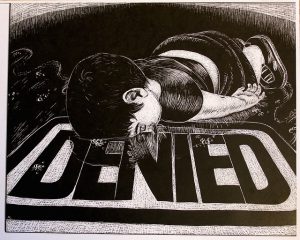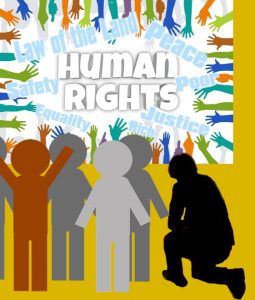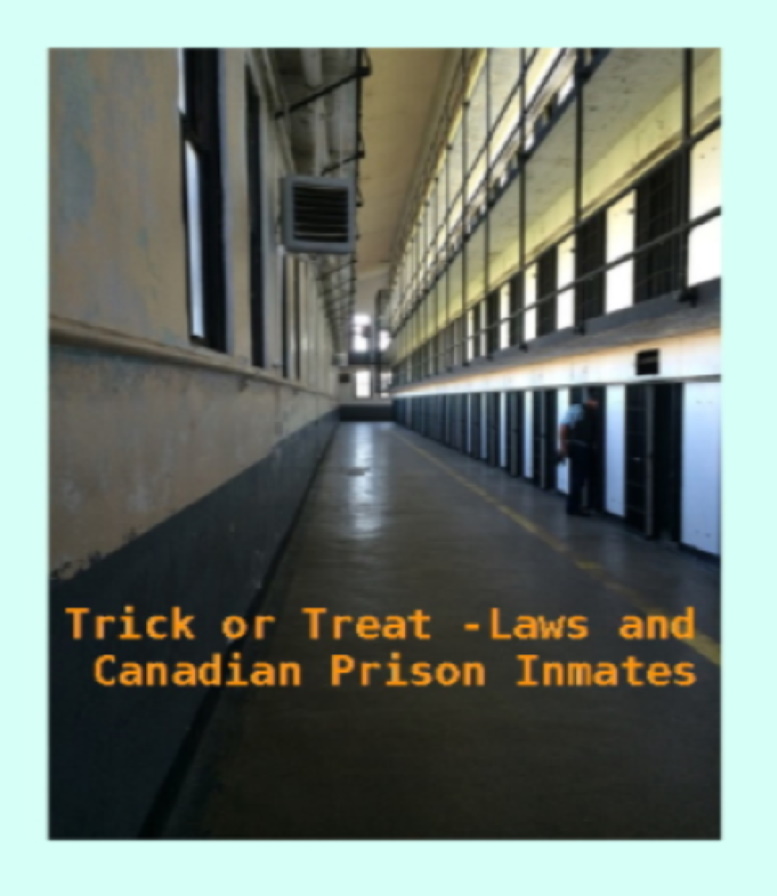
Laws in Canada are available across the nation for many Canadians. Laws are created to help keep society operating, and sets down rules for actions and behaviors that are unacceptable and applies consequences. They serve as guidelines for how people can best manage themselves both in private and in public life. Most importantly, to help keep harm from befalling the people. So, what is Trick or Treat – Laws and Canadian prison inmates mean for us?
Laws are created by the government and enforced by police and the Judicial system (Judges, jails, prisons). Citizens are able to go to court to defend themselves with a court-appointed lawyer, or hired lawyer.
A prison sentence can be applied for crimes that fall within the Canadian Criminal code. There are Federal, Provincial and municipal laws, courts and varying levels of consequences. Canadian prisons have a high number of BIPOC (Black, Indigenous People of Color) which should beg the question, why? And what does this say about the government, courts and nation, to accept such obvious differentiation?
Canada is good at creating criminals but not so with rehabilitating inmates to re-enter society with an improved regard for others and self. How does one find hope with such indifference and dehumanizing actions taken upon them?
I’m Indigenous, and would think, I’m NOT safe in this country because I’m colored. Does it seem like the message for the Life of a minority is meaningless in this nation?
Crimes are committed by both genders, men and women, and Youth laws apply to youths since they too have proven that they can commit adult crimes. Outcomes of going through the court system, after age 18 for criminal charges, creates a Criminal record. This record keeps a record of all crimes that a person commits and, becomes a barrier towards finding employment in certain careers. It is permanent. Youth records get sealed but not always.
Tricks
Now, let’s take a peek at those behind bars residing in jail/prisons. A common antic that arises for an inmate nearing his/her release date. One or more inmates will go all out with violence to sabotage and/or cancel outright, the release of another inmate.
Such acts will ensure another criminal charge upon the inmate ready for release. This will prolong his/her stay in jail for another time frame, and until another court day is set for this new charge.
A deliberate physical assault gets initiated against the inmate set for release, and the one initiating the fight will ‘play‘ the role of victim. We’ll assign them as inmate A, ready for release, and inmate B, plans to stop the release.
Jails and prisons may and/or will have two inmates per cell. So, during lockdown the two inmates are in one room. Nobody is looking, staff shortages do not have guards patrolling the cells, and there may be no cameras. Inmate B will not have any witnesses other than maybe one or two cells across the aisle and those inmates may support his claim.
The distance between cells may skew line of sight. Nobody may see inmate B throwing the first punch. They may not see the non-stop attack being done upon inmate A. They may only see the middle-to-end fighting.
Inmate A defending himself from harm and inmate B taking hits willingly even deliberately walking into the return punches. After all, the worst inmate B looks, the worst the jail and courts will see inmate A.
Once this assault has the attention of the prison guards. Inmate B enters his/her role, the victim of a physical assault. Inmate A is immediately removed and put into another prison area designated for the ‘violent’. A serious unpredictable environment literally has inmates in high stress and survival mode. Is this supposed to help ‘rehabilitate‘ inmates too?
Usually, an inmate is moved to a ‘range’ with other inmates soon to be released, and they wait out their time with minimal, if any, problems. Unfortunately, this practice may not be followed nor available.
Office of the Correctional Investigator
Oh yes, I know. This can’t be real! No way, etc, etc. It happens, is happening. I suggest you read one, or more, reports from the Office of the Correctional Investigator –> here to learn about the most recent 2019-2020 report.
The reports are honest and definitely fall within his Mission Statement of investigations and “ serves Canadians and contributes to safe, lawful and humane corrections through independent oversight of the Correctional Service of Canada by providing accessible, impartial and timely investigation of individual and systemic concerns.” I appreciate the honesty, courage, humanity and objectivity of these reports, and glad he can present them to Parliament.
It is greatly alarming to read about Corrections staff permitting harms between inmates, and permission from Superiors, to use ‘techniques‘ requiring brutal physical force upon inmates aka ‘pain compliance techniques‘ for 17 minutes.

Reading this section of the report was quite eye opening, and I have to ask the governments and all parties who ‘create‘ such policies, why allow inflicting such brutality on others? Add to these abhorrent acts done by Corrections staff – there are zero consequences. Nobody takes responsibility nor are charges applied. I do not see how such treatment of inmates helps to ‘rehabilitate‘ them for re-entry into mainstream society.
Canadian Charter of Rights and Freedoms
Canada has a Constitution Act with the Canadian Charter of Rights and Freedoms, and under Legal Rights, the following says :
Treatment and Punishment
12. Everyone has the Right not to be subjected to any cruel and unusual treatment or punishment.
The policy for ‘Pain compliance‘ has since been changed. No such force is permitted but how long will that last? We saw the effects on inmates of what ‘Segregation‘ does to the human mind. Yet this practice is still ongoing. It just has a new name, Quarantine being one. Inmates still sit in segregation cells for 23 hours and maybe, allowed out for one hour, and time runs out to use the phone for many when they’re forced to return to their cells.
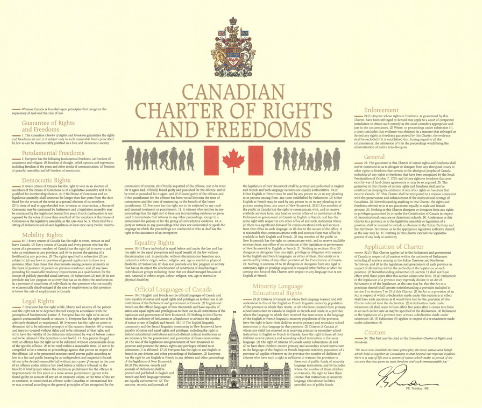
Further into reading the Charter of Rights and Freedoms, we will see ;
Application of Charter
27. The Criminal Law, except the Constitution of Courts of Criminal Jurisdiction, but including the Procedure in Criminal Matters.
- 32 (1) This Charter applies
- (a) to the Parliament and government of Canada in respect of all matters within the authority of Parliament including all matters relating to the Yukon Territory and Northwest Territories; and
- (b) to the legislature and government of each province in respect of all matters within the authority of the legislature of each province.
Read a little further into the Constitution Act and we’ll find a division between Federal and Provincial powers and jurisdiction that shows TWO Constitutions;
VI. Distribution of Legislative Powers
Powers of the Parliament
Legislative Authority of Parliament of Canada
28. The Establishment, Maintenance, and Management of Penitentiaries.
Exclusive Powers of Provincial Legislatures
6. The Establishment, Maintenance, and Management of Public and Reformatory Prisons in and for the Province.
7. The Establishment, Maintenance, and Management of Hospitals, Asylums, Charities, and Eleemosynary Institutions in and for the Province, other than Marine Hospitals.
Laws and Inmates
Sleight of hand? Create changes in policies to become law of the land. A method used in Federal and Provincial governments, to skirt accepting responsibility for any wrongdoing. Do you see it? One level of government follows the rules and turns a blind eye on the 2nd level of government allowing brutalities behind bars and near open abuses on the People. Both claim innocence and, ‘its for public safety‘ and neither allowing consequences for such brutalities.
Is this a Proud moment for Canadians?
Is this truly acceptable treatment of prison Inmates?
Do you question the state of mind of government officials who write policy?
Does each ‘erosion‘ of Rights mean LESS Protections for the People?
Should any level of government be allowed to ‘violate’ Constitutional rights of the People with impunity (exempt from punishment)?
Is this how Canada should be governed ?
Is there no ONE and TRUE Constitution now?
Learning in Motion
Reading Resources
Canadian Charter of Rights and Freedoms, PDF
What is difference between flawed democracy and full democracy?
10 Awful Canadian Violations of Human Rights
I hope you found this article informative and gained some new insight. Please feel free to leave your comments and share your new found knowledge with others. Use the ‘Ask A Question’ form to make a request on a topic of your own interest. It is FREE to subscribe by RSS feed.



